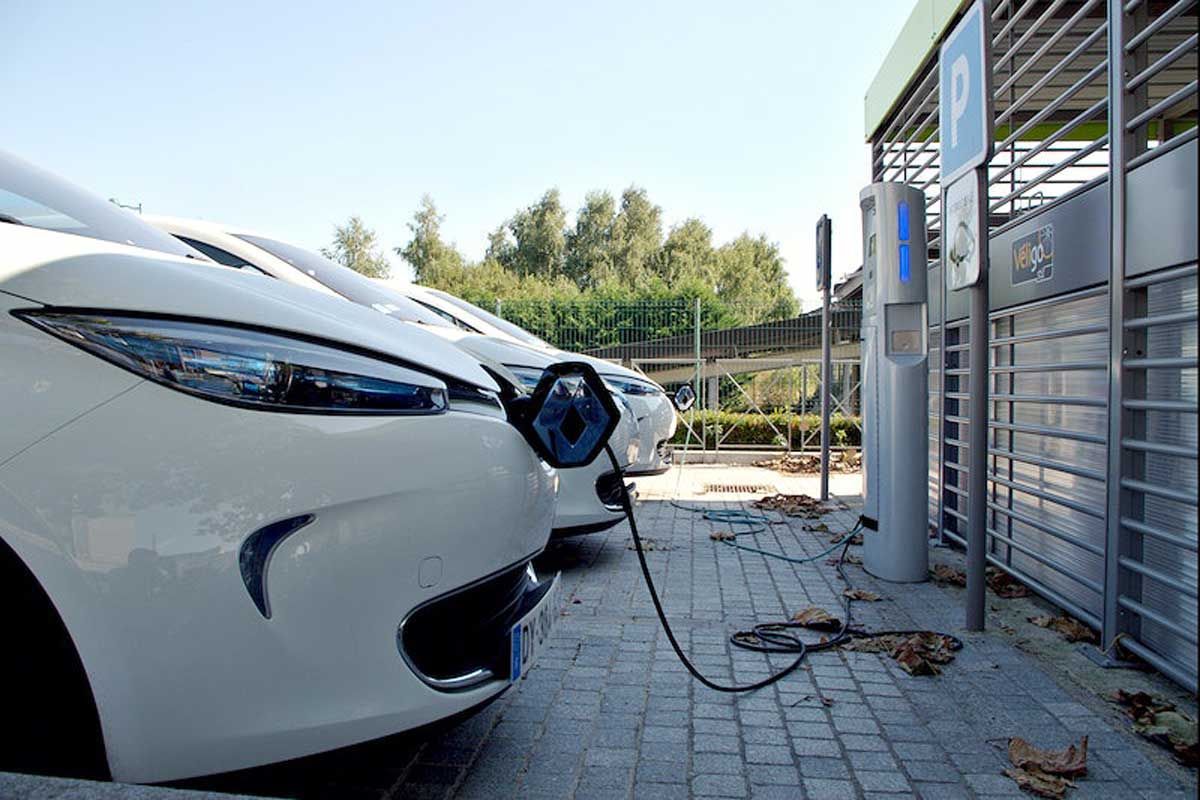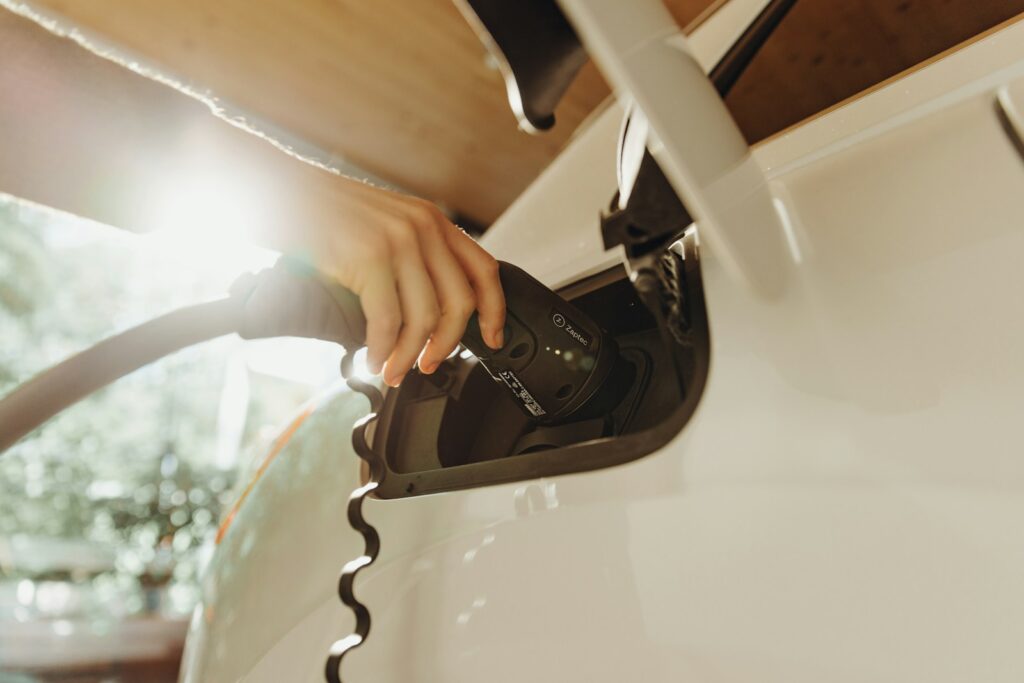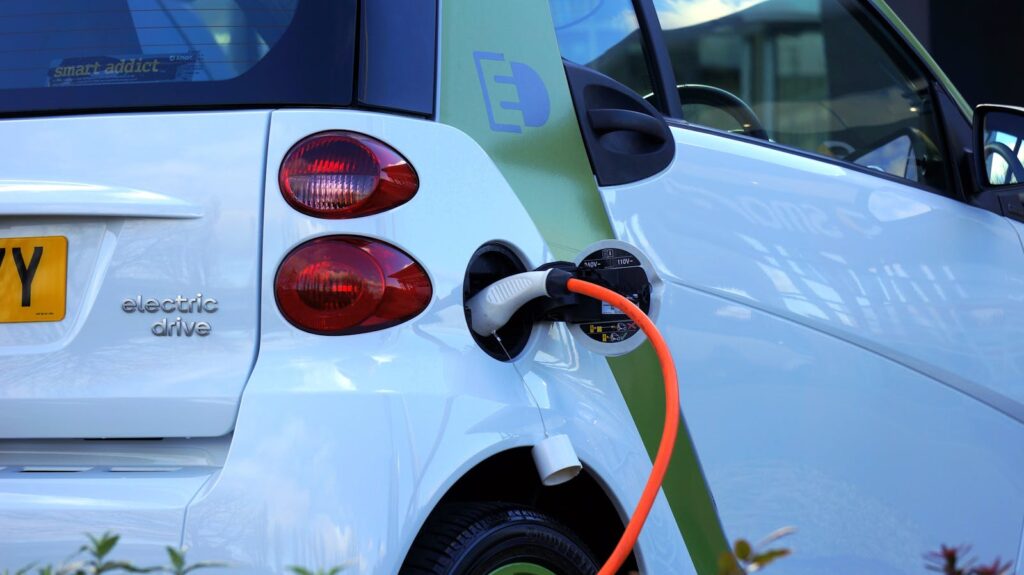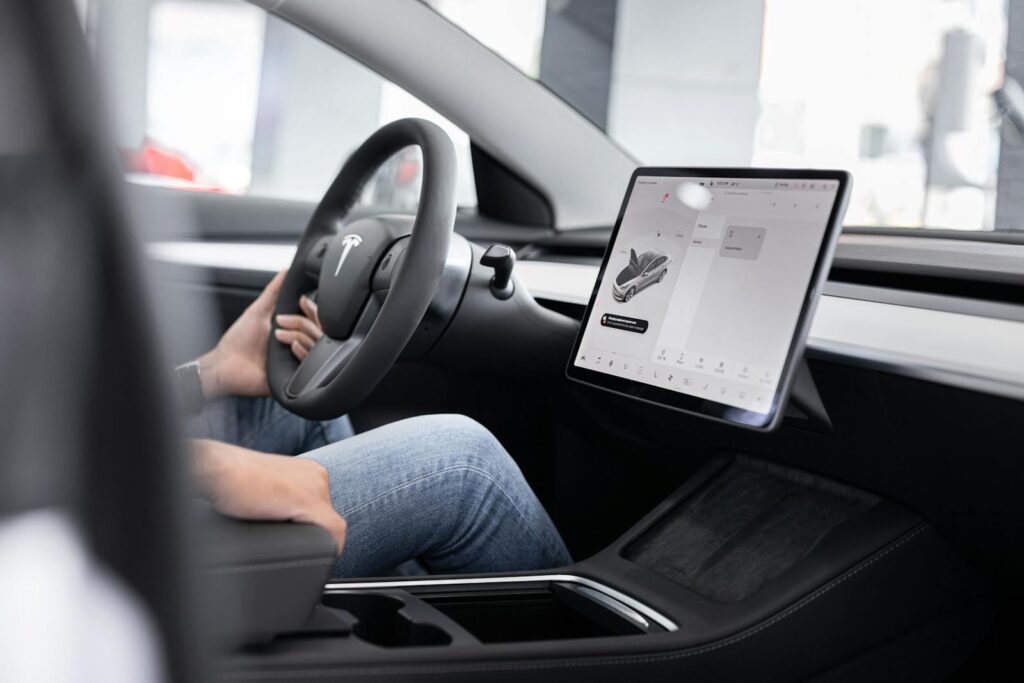Electric vehicles (EVs) are no longer a futuristic dream; they’re rapidly becoming a cornerstone of our daily lives, transforming how we commute and interact with energy. Yet, as exciting as the current generation of EVs is, powered predominantly by lithium-ion batteries, a new contender is on the horizon, promising to push the boundaries of what’s possible: solid-state batteries.
Imagine an EV that can travel over 600 miles on a single charge, refuel in mere minutes, and offers a level of safety far beyond anything we’ve seen before. This isn’t science fiction anymore. Thanks to relentless research and development, solid-state battery technology is moving from the lab to real-world applications, with prototype vehicles already undergoing road tests. This next-generation power pack is poised to eliminate the last lingering doubts about EV practicality, making gasoline-powered vehicles truly a thing of the past.
But what exactly are these revolutionary batteries, and how do they work their magic? The promise seems almost too good to be true, yet the underlying science and engineering breakthroughs are making it increasingly plausible. Let’s delve into the simple yet profound facts about solid-state batteries that are set to redefine the electric vehicle landscape.

1. **Lighter and More Compact by Design**One of the immediate and tangible benefits that solid-state batteries promise is a significant reduction in weight and size compared to their lithium-ion counterparts. Current EV batteries, while efficient, are bulky and heavy, impacting vehicle design, performance, and overall efficiency. The very architecture of solid-state cells addresses this challenge directly.
These next-gen power packs are engineered from the ground up to be inherently lighter and more compact. This design philosophy stems from the core components and how they interact. By eliminating extraneous materials and optimizing internal structure, engineers can achieve a greater energy-to-weight ratio, which is crucial for maximizing vehicle range and dynamic performance.
The implications of this are far-reaching for automotive manufacturers. Lighter battery packs mean lighter vehicles, which in turn require less energy to move, leading to even greater efficiency. A more compact battery also opens up new possibilities for vehicle interior design, allowing for more passenger space or innovative storage solutions, ultimately enhancing the consumer experience.
Read more about: 10 Unexpected Ways Your New Car Insurance Policy Can Beat Your Old One’s Price
2. **Enhanced Safety: Nearly Impervious to Fire**Perhaps one of the most compelling advantages of solid-state batteries lies in their dramatically improved safety profile. Standard lithium-ion batteries, while generally safe, use a liquid electrolyte that is highly flammable. Although instances are rare, the combustion of this liquid can lead to challenging-to-extinguish fires, which remains a significant public concern.
Solid-state battery design fundamentally tackles this issue by replacing the volatile liquid electrolyte with a solid one. This solid material is, by its very nature, almost entirely impervious to fire. This crucial change eliminates the primary source of thermal runaway and subsequent combustion, making solid-state batteries inherently safer under various operating conditions, including severe impacts.
This shift moves beyond incremental safety improvements seen in current lithium-ion packs, which rely on sophisticated circuit breakers and other safeguards. Instead, solid-state technology offers a foundational safety upgrade, transforming the perception and reality of EV battery reliability. For consumers, this translates to greater peace of mind, knowing their vehicle’s power source is designed with an unparalleled level of intrinsic safety.

3. **Greater Energy Density: Eradicating Range Anxiety**Solid-state batteries are engineered to hold a significantly greater amount of energy compared to today’s lithium-ion power packs. This leap in energy density is a game-changer for electric vehicles, directly addressing one of the most common anxieties among potential EV buyers: range. Imagine consumer EVs capable of traveling four, five, or even six hundred miles on a single charge.
This remarkable potential to store more energy per unit of volume or weight means that vehicles can achieve vastly extended driving ranges without needing larger, heavier battery packs. The context draws a powerful analogy, comparing storing electrical energy to pumping water from a low-lying reservoir up to a high mountain lake. The volume of that mountain lake directly corresponds to the battery’s capacity—how much charge it can hold. Solid-state technology is essentially building much larger mountain lakes.
With such a substantial increase in driving range, the concept of ‘range anxiety’ could become a distant memory. This would open up long-distance travel to EVs with far fewer stops, making them more competitive and convenient than ever before for all types of journeys, from daily commutes to cross-country adventures. The ability to pack more power into the same or even smaller footprint will undoubtedly accelerate EV adoption.

4. **Rapid Recharging: Minutes, Not Hours**Beyond extended range, solid-state batteries promise to revolutionize the charging experience, making EV ‘fill-ups’ almost as fast as pumping gasoline into a conventional car. Today’s “fast” recharges often still take half an hour or more, a significant inconvenience for many drivers, especially on long trips.
The fundamental design of solid-state batteries, particularly the properties of their solid electrolytes, allows for much higher charging rates. Unlike liquid electrolytes which can chemically break down if voltage is upped too far to rush ions along, solid electrolytes can tolerate higher voltages. This means lithium ions can flow much faster between electrodes without risking damage to the battery’s internal chemistry.
This capability translates directly into dramatic reductions in charging times, with the promise of fully recharging an EV in minutes. Such speed would eliminate one of the last major hurdles to widespread EV adoption, making spontaneous long-distance travel and quick top-ups during errands entirely practical. It bridges the convenience gap between electric and gasoline vehicles, a crucial factor for many consumers.
5. **The Fundamental Shift to Solid Electrolytes**The core innovation enabling all these advantages is the replacement of the liquid electrolyte found in traditional lithium-ion batteries with a solid material. In standard batteries, the liquid acts as a medium for charged lithium particles (ions) to shuttle back and forth between the positive and negative electrodes, a process essential for storing and releasing energy.
The new battery design leverages a solid electrolyte that performs the same crucial function—allowing the easy passage of ions. However, this solid material brings with it a host of other physical and chemical changes that are transformative. Foremost among these is its nearly impervious nature to fire, as discussed, but it also allows for a more robust and stable internal environment.
This solid medium not only enhances safety but also facilitates other design improvements, contributing to the battery’s lighter weight, greater energy density, and faster charging capabilities. It’s a foundational change that unlocks a cascade of benefits, moving beyond merely swapping one component for another to entirely redefining the battery’s operational characteristics and potential.
Read more about: Unmasking the Sugar Traps: 14 Unexpected Foods Secretly High in Sugar (and How to Avoid Them)

6. **Overcoming Early Skepticism: The Pre-2010 Hurdle**For a long time, the concept of a solid-state battery for large-scale applications like electric vehicles seemed like an engineering pipe dream. As Eric McCalla, who studies battery materials at McGill University, put it, prior to about 2010, “the solid-state battery had always seemed like something that would be really awesome—if we could get it to work.” The theoretical advantages were understood, but practical implementation was elusive.
The primary challenge stemmed from the material requirements for the solid electrolytes themselves. Historically, known solid materials that could conduct ions did so at rates that were “orders of magnitude slower than liquid electrolytes.” This presented a significant bottleneck because efficient ion flow is absolutely critical for a battery to charge and discharge effectively. The fluid nature of liquid electrolytes gave ionized lithium atoms an easy medium to move through, a stark contrast to the sluggish movement through solids.
This meant that despite the theoretical appeal, the actual performance of early solid-state concepts was far from what would be needed to power a robust electric vehicle. The technology was deemed “beyond the state of the art” for practical applications, relegated largely to academic curiosity rather than commercial viability. This period of skepticism underscored the immense challenge that needed to be overcome before solid-state batteries could become a reality.
7. **The Breakthrough of Superionic Materials**The tide began to turn dramatically in the past two decades with the groundbreaking discovery of several families of lithium-rich compounds that are described as “superionic.” This class of materials represents a pivotal advancement, overcoming the long-standing hurdle of slow ion conduction in solids. In these remarkable compounds, some atoms behave like a crystalline solid, providing structural integrity, while others behave more like a liquid, allowing for rapid ion movement.
This unique dual nature of superionic materials means they can conduct lithium ions as fast as, if not faster than, the liquid electrolytes used in standard batteries. This breakthrough effectively removed the biggest “bottleneck” that had plagued solid-state battery development for decades. It proved that it was indeed possible for ions to flow freely and quickly through a solid medium.
The discovery of superionic materials transformed solid-state batteries from a theoretical marvel into a tangible possibility. This paradigm shift ignited a surge of research and development, attracting billions of dollars in investment globally. It signaled that the challenge was no longer proving feasibility, but rather figuring out how to manufacture these devices at scale and at an acceptable cost, moving the technology closer to widespread commercialization.

8. **The Economic Reality: Competing with Lithium-Ion’s Head Start**The path to widespread adoption for solid-state batteries isn’t just a technical race; it’s also an economic marathon against an established giant. As University of Washington materials scientist Jun Liu notes, while feasibility is proven, the “big challenge now is figuring out how to manufacture these devices at scale, and at an acceptable cost.” This is a formidable hurdle when facing an industry that has had decades to mature and optimize its processes.
Physicist Alex Louli, an engineer at QuantumScape, emphasizes this stark reality: “Lithium-ion batteries have been developed and optimized over the last 30 years, and they work really great.” This optimization isn’t just about performance; it’s about cost. When Japan’s Sony Corporation introduced the first commercial lithium-ion battery in 1991, it cost the equivalent of $7,500 for every kilowatt-hour (KwH) of energy it stored. By April 2025, that price had plummeted to $115 per KwH, with projections to drop even further toward $80 per KwH or less by 2030, making new EVs potentially substantially cheaper than equivalent gasoline-powered vehicles.
This dramatic cost reduction isn’t primarily due to “any fundamental chemistry improvements,” explains Mauro Pasta, an applied electrochemist at the University of Oxford. Instead, it’s been driven by “the economies of scale in manufacturing.” Liu highlights the roll-to-roll process used for the cylindrical batteries found in most of today’s EVs as a prime example, allowing for the making of “hundreds and thousands of cells very, very quickly with very high quality.” Solid-state batteries, still in their early manufacturing stages, lack this massive infrastructure and established cost efficiency.
Furthermore, lithium-ion technology has made significant strides in safety. While instances are rare, the combustion of the liquid electrolyte can lead to challenging-to-extinguish fires. However, thanks to the circuit breakers and other safeguards built into modern battery packs, only about 25 EVs catch fire out of every 100,000 sold, versus some 1,500 fires per 100,000 conventional cars. This robust, affordable, and increasingly safe existing technology presents a formidable competitor, making some experts, like Eric McCalla, wonder “if the train has already left the station” for solid-state.

9. **Geopolitical Implications and Opportunities**Despite the economic dominance of existing lithium-ion technology, solid-state batteries carry a unique geopolitical appeal that is driving significant investment and strategic interest globally. Ying Shirley Meng, a materials scientist at the University of Chicago and Argonne National Laboratory, points out a crucial factor: “With lithium-ion batteries the game is over—China already dominates 70 percent of the manufacturing.”
For nations and blocs seeking to reduce reliance on existing supply chains or to establish themselves as leaders in the next technological revolution, solid-state technology offers a fresh start. “Solid-state presents a very exciting opportunity” for any country looking to lead the next generation of battery innovation. This desire for technological sovereignty and leadership is a powerful motivator for the billions of dollars being poured into solid-state battery research and development worldwide.
This pursuit is not merely about market share; it’s about strategic independence and future economic advantage. By investing heavily in solid-state development, countries can foster domestic innovation, create new industries, and potentially secure a leading position in the burgeoning EV market of tomorrow. The opportunity to reshape the global energy storage landscape is a compelling force behind the rapid advancement of this technology.
Read more about: 15 Simple Cars from the 1970s That Are Now Worth Over $75000

10. **Performance Plateau of Standard Lithium-Ion**While lithium-ion batteries have achieved incredible success and optimization over the last three decades, they are beginning to encounter fundamental limits in performance. As EV buyers increasingly demand ever greater range and charging speed, standard lithium-ion formulations are “hitting a performance plateau,” according to Alex Louli of QuantumScape. This signifies that incremental improvements are becoming harder to achieve through existing chemistry and architecture.
To truly push beyond these limitations, Louli asserts that “you have to go back and start doing some material innovations.” This is precisely where solid-state batteries enter the picture, offering a radical departure from the traditional liquid electrolyte design. The inherent properties of their solid components allow for breakthroughs that are simply not possible within the confines of conventional lithium-ion chemistry.
For instance, the liquid electrolyte, while effective, is not only flammable but also inherently limits charging speed. When you plug in an electric car, the charging cable applies a voltage between the battery’s two electrodes, the cathode and the anode. Attempts to rush the ions along by dramatically increasing this voltage can cause the electrolyte to chemically degrade, ending the battery’s charging days forever. This fundamental constraint means that standard lithium-ion batteries, despite their advancements, cannot achieve the ultra-fast charging times that consumers desire for true gasoline-pump-like convenience.
Read more about: Inside Gordon Ramsay’s Blistering Garage: A High-Octane Tour of His Ferrari-Filled, Supercar-Stacked Collection

11. **Enabling Lithium-Metal Anodes**One of the most revolutionary aspects of solid-state technology is its ability to safely enable the use of lithium-metal anodes. In standard lithium-ion batteries, the neutralized lithium atoms are stored in a graphite layer at the anode during charging. While graphite was a “major commercial advance in 1991” and is “cheap, chemically stable, excellent at conducting electricity,” it comes with significant drawbacks.
Graphite anodes impose a charging rate limit because their hexagonal carbon lattice can only accommodate so many ions at once. More critically for EV performance, graphite is “heavy, wasting a lot of mass and volume on a simple container,” as Louli explains. “Graphite is an accommodating host, but it does not deliver energy itself—it’s a passive component.” This means a substantial portion of the battery pack’s weight and volume is dedicated to a component that doesn’t directly contribute to energy storage.
Automakers are keenly aware of this limitation and are “eager for an alternative to graphite” to maximize capacity and reduce weight, thereby extending range. The “ultimate alternative would be no cage at all, with no wasted space or weight—just incoming ions condensing into pure lithium metal with every charging cycle.” Such a metallic lithium anode could “store maybe 10 times more electrical energy per gram than a graphite anode,” representing a monumental leap in energy density. While lithium-metal anodes have been demonstrated in labs since at least the 1970s, their safe and reliable integration with liquid electrolytes has proven impossible due to degradation reactions and dendrite formation.
12. **Preventing Dendrite Formation**The quest for lithium-metal anodes in standard lithium-ion batteries has been thwarted for decades by a critical safety and longevity issue: dendrite formation. Alex Louli explains that even after “decades of trying,” no one has been able to make metal anodes work safely and reliably with liquid electrolytes. This is due to several problems, including reactions between the liquid electrolyte and the lithium metal that “degrade them both,” leading to “a very bad battery lifetime.”
More ominously, during charging a battery with liquids, “the lithium going to the anode can plate out non-uniformly and form what are called dendrites,” as Eric Wachsman clarifies. These “jagged spikes of metal can grow in unpredictable ways and pierce the battery’s separator layer.” This separator, typically a thin film of electrically insulating polymer, is crucial for keeping the two electrodes from touching one another.
If dendrites breach this barrier, it can easily lead to “a short circuit that abruptly ends the device’s useful life, or even sets it on fire.” This inherent risk has made lithium-metal anodes impractical for commercial lithium-ion batteries despite their immense energy density potential. Solid-state technology offers a transformative solution, replacing “both the liquid electrolyte and the separator with a solid-state layer tough enough to resist those spikes,” according to Wachsman.
This robust solid barrier “has the potential of, one, being stable to higher voltages; two, being stable in the presence of lithium metal; and three, preventing those dendrites.” This trifecta of benefits is “just about everything you need to make those ultra-high-energy-density lithium-metal anodes a practical reality.” As Louli aptly summarizes, “That is what is really attractive about this new battery technology,” and the abundance of superionic solids capable of this is “what’s driving the push for it.”
Read more about: The Enduring Saga of the American Robin: An In-Depth Look at North America’s Most Prolific Songbird

13. **Tolerating Higher Voltages for Faster Charging**The ability of solid-state batteries to tolerate significantly higher voltages during charging is a game-changer for EV owners longing for ultra-fast recharges. In standard lithium-ion batteries, the liquid electrolyte imposes a strict speed limit. When an EV is plugged in, the charging cable acts as an external circuit that’s applying a voltage between the battery’s two electrodes, the cathode and the anode.
However, attempting to “rush the ions along by upping the voltage too far” in a liquid electrolyte risks a severe consequence: “the electrolyte will chemically break down, ending the battery’s charging days forever.” This chemical instability at higher voltages means that even with powerful chargers, there’s an inherent ceiling to how quickly lithium-ion batteries can safely be recharged, typically resulting in half an hour or more for a substantial charge.
Solid-state batteries, thanks to their “best superionic conductors,” fundamentally bypass this limitation. Not only do these solid electrolytes “offer a faster ion flow than liquid electrolytes,” but critically, “they also can tolerate higher voltages.” This combination translates directly into dramatically reduced charging times, opening the door for EV recharges “in under 10 minutes,” a stark contrast to today’s typical liquid-electrolyte-bound charging speeds. This capability is pivotal in making EVs as convenient for quick ‘fill-ups’ as gasoline cars.

14. **Manufacturing Challenges: Sulfide Electrolytes**While the theoretical advantages of solid-state batteries are clear, translating them into mass-produced reality faces significant manufacturing hurdles. The field’s focus has “shifted from research to practice, figuring out how to work the same kind of large-scale, low-cost manufacturing magic that’s made the standard lithium-ion architecture so dominant.” Among the leading contenders for early commercialization are the sulfide electrolytes, first discovered by Japanese researchers in 2011.
These superionic sulfides are attractive to major investors, including startups like Colorado-based Solid Power and Massachusetts-based Factorial Energy, and established giants like China’s CATL, as well as global carmakers such as Toyota and Honda. The “one big reason for the focus on superionic sulfides,” explains Eric Wachsman, is that “They’re easy to drop into existing battery cell manufacturing lines,” including the efficient roll-to-roll process. This compatibility offers a pathway to leverage the billions of dollars already invested in current lithium-ion infrastructure, rather than entirely displacing it.
However, these superionic sulfides also come with notable downsides, primarily their “extreme sensitivity to humidity.” This sensitivity complicates the drop-in process, as the “dry rooms that are currently used to manufacture lithium-ion batteries have a humidity content that is not nearly low enough for sulfide electrolytes,” requiring costly retooling. Furthermore, this sensitivity poses a serious safety risk if the batteries are ever “ruptured in an accident,” warns Oxford’s Pasta. “If you expose the sulfides to humidity in the air you will generate hydrogen sulfide gas, which is extremely toxic.” These challenges highlight the trade-offs involved in scaling up solid-state battery production.

15. **Manufacturing Challenges: Oxide Electrolytes**Given the inherent challenges with sulfide electrolytes, some startups and researchers are exploring alternative solid-state materials, particularly oxide electrolytes. Companies such as QuantumScape, and the Maryland-based Ion Storage Systems that spun out of Wachsman’s lab in 2015, are “looking beyond sulfides to solid-state oxide electrolytes.” These materials are essentially “ceramics,” as Wachsman describes, produced through a high-tech version of pottery making: “You shape the clay, you fire it in a kiln, and it’s a solid.”
The appeal of oxide electrolytes lies in their robustness. Once fired and solidified, these ceramic-based materials become “a superionic solid that’s all but impervious to humidity, heat, fire, high voltage, and highly reactive lithium metal.” This intrinsic stability addresses many of the safety and environmental concerns associated with sulfide-based alternatives, offering a potentially safer and more durable battery chemistry.
However, this robustness also introduces its own set of manufacturing difficulties. Ceramics are inherently “too brittle for roll-to-roll processing” once they have been fired and solidified, according to Wachsman. This means that manufacturing processes cannot simply be adapted from existing lithium-ion lines, necessitating entirely new approaches. Handling ceramics “more like a semiconductor wafer” implies a different, potentially more complex and costly, manufacturing paradigm. These distinct challenges for oxide electrolytes represent the ongoing efforts to find the most viable path to widespread solid-state battery production.
The journey of solid-state batteries, from a theoretical marvel to a tangible reality, is a testament to human ingenuity and relentless scientific pursuit. While the road ahead is still paved with manufacturing complexities and economic competition, the core promise remains undeniable: a future where electric vehicles are lighter, safer, boast unparalleled range, and recharge faster than ever imagined. The “when” of this future might still be a subject of intense debate and innovation, but the “if” has long been settled. We are on the cusp of an energy storage revolution that will not only redefine transportation but also empower a cleaner, more efficient tomorrow.









